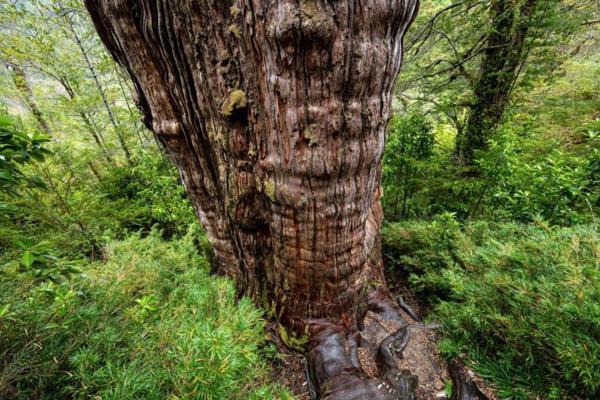World’s ‘oldest’ tree able to reveal planet’s secrets
SANTIAGO


In a forest in southern Chile, a giant tree has survived for thousands of years and is in the process of being recognized as the oldest in the world.
Known as the “Great Grandfather,” the trunk of this tree measuring 4 meters in diameter and 28 meters tall is also believed to contain scientific information that could shed light on how the planet has adapted to climatic changes.
Believed to be more than 5,000 years old, it is on the brink of replacing Methuselah, a 4,850-year-old Great Basin bristlecone pine found in California in the United States, as the oldest tree on the planet. “It’s a survivor, there are no others that have had the opportunity to live so long,” said Antonio Lara, a researcher at Austral University.
The Great Grandfather lies on the edge of a ravine in a forest in the southern Los Rios region, 800 kilometers to the south of the capital Santiago. It is a Fitzroya cupressoides, a type of cypress tree that is endemic to the south of the continent.
In recent years, tourists have walked an hour through the forest to the spot to be photographed beside the new “oldest tree in the world.”
Due to its growing fame, the national forestry body has had to increase the number of park rangers and restrict access to protect the Great Grandfather. By contrast, the exact location of Methuselah is kept a secret.
Also known as the Patagonian cypress, it is the largest tree species in South America.
It lives alongside other tree species, such as coigue, plum pine and tepa, Darwin’s frogs, lizards, and birds such as the chucao tapaculo and Chilean hawk.
For centuries its thick trunk has been chopped down to build houses and ships, and it was heavily logged during the 19th and 20th centuries.
Park warden Anibal Henriquez discovered the tree while patrolling the forest in 1972. He died of a heart attack 16 years later while patrolling the same forest on horseback.
“He didn’t want people and tourists to know [where it was] because he knew it was very valuable,” said his daughter Nancy Henriquez, herself a park warden.
